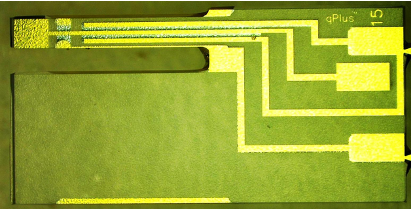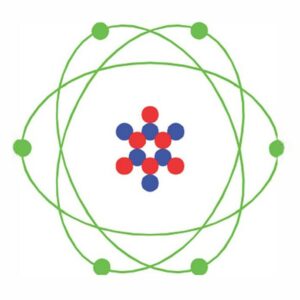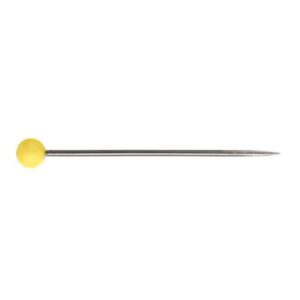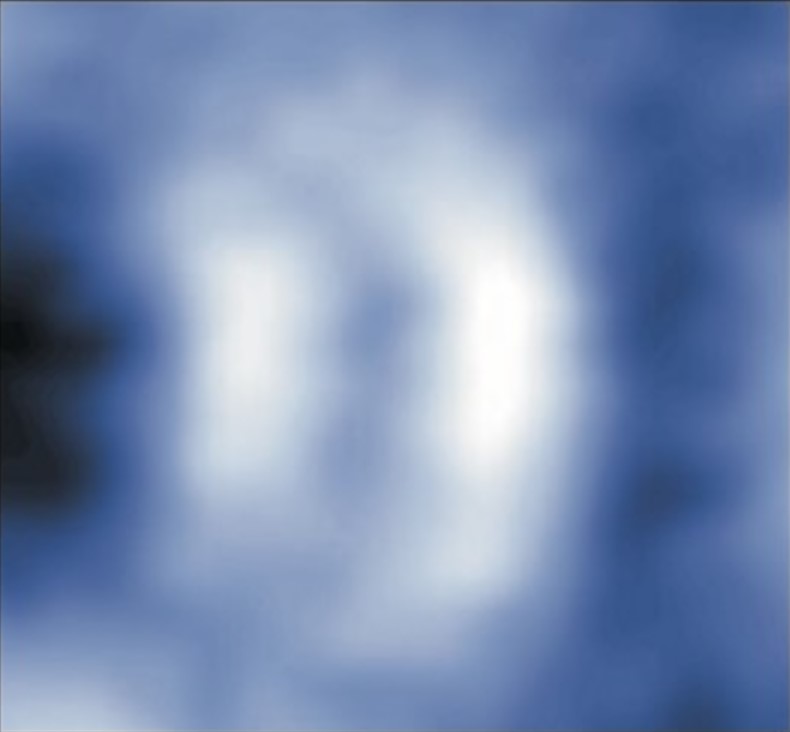qPlus®
An atomic force microscope with a qPlus® Sensor as its core exceeds all other microscopy techniques in spatial resolution, providing the sharpest images of the tiniest constituents of our world.

Conceptually, atomic force microscopy (AFM) is simple: a positioning device allows to raster scan a sharp tip mounted on a cantilever over a surface.
A computer records the traces and creates an image of the surface under study.
The sensor that holds the tip is the core of the AFM.


Photo: National Institute of Materials Science (NIMS), Tsukuba, Japan (Nov 2024)
Message from Franz J. Giessibl
Welcome to the homepage of the qPlus sensor! The qPlus sensor is a powerful core of the atomic force microscope (AFM) that optimizes its spatial resolution and ease of use. The inquiry into the full potential of the qPlus sensor in AFM follows this strategy:
CV of Franz Giessibl
1982 Prediploma in Precision Engineering at University of Applied Sciences Munich
1982 – 1987 Studies in Physics and Mathematics at Technical University of Munich and Eidgenössische Technische Hochschule Zurich
1987 Thesis on Raman Scattering on SiGe Monolayer Superlattices with Gerhard Abstreiter
1988 Diplom-Physiker at Technical University of Munich
1988 – 1991 PhD thesis on low temperature atomic force microscopy in ultrahigh vacuum with Nobel Laureate Gerd Binnig at IBM Physics Group Munich / Ludwig Maximilians University of Munich
1992 Postdoctoral Fellow at IBM Physics Group Munich
1992-1993 Senior Scientist at Park Scientific Instruments, Sunnyvale, USA, lead designer of noncontact AFM for UHV
1994 First successful atomic resolution of Si 7×7 by AFM, published in Science Jan 1995
1994 Director of Vacuum Products at Park Scientific Instruments
1995-1996 Senior Associate with McKinsey & Company, invention of qPlus sensor in home laboratory, first patent applications in Germany and USA
1997 Permanent research staff member at Chair of Professor Jochen Mannhart, University of Augsburg
1999 First subatomic spatial resolution by AFM, achieved with qPlus sensor, published in Science in July 2000
2001 Venia legendi at University of Augsburg
2005 Offers for Chairs at University of Bristol, UK and Regensburg, Germany
2005-2010 Multiple research stays at the former Don Eigler low temperature STM group at IBM Research Laboratory Almaden with Andreas Heinrich
2006 Establishing Chair for Quantum Nanoscience at University of Regensburg
2011 Invention of next generation qPlus sensors, patents in D, USA, China
2014 Visiting Professor at National Institute of Standards and Technology (NIST) Gaithersburg, USA with Joseph Stroscio
2025 Visiting Professor at National University of Singapore (NUS) with Jiong Lu and Shaotang Song
Video portrait: https://mediathek2.uni-regensburg.de/playthis/648730a2d4f163.21781006
The ratio between the diameter of an atom and the height of a human is similar to the ratio between the diameter of a pinhead and our earth.




Scanning tunneling microsocopy and atomic force microscopy can resolve atoms, where an atom is imaged as a blurry spot.
In the initial examples of subatomic resolution, the front atom of the sensor’s tip was imaged by the sample, revealing orbital structures of the tip’s front atom (left pair of images below).
In later examples of subatomic resolution, the metallic front atom of the sensor’s tip was terminated by a CO molecule, providing an ultrasharp tip that imaged single sample atoms (right pair of images below).



Left: Si tip atom, Fig. 3 in Science 289, 422 (2000).
Right: W tip atom, Fig. 4 in Science 305, 380 (2004).


Left: Fe atom, Fig. 1I in Science 348, 308 (2015).
Right: Cu atom, Fig. S1D in Science 348, 308 (2015).
Proof of concept
Significant works that utilize the qPlus® sensor may serve as a demonstration of its merits and spark the imagination for potential future applications. A very small selection of published results in various application fields is listed here.
Long ago in a late night session,
Goethe’s Faust has raised the question:
Could we ever find out whether,
or what holds our world together.
Binnig, Quate, Gerber in nineteen eighty six,
created an instrument that did the tricks.
They called it atomic force microscope,
scientists worldwide were full of hope.
Could it really see, feel, push the atom,
elusive, far out, could we ever fathom?
If true the atomic force microscope we adore,
with its silicon cantilever at its core,
could see the atom in all its beauty,
calling scientists globally to the duty.
But must the core be a silicon cantilever,
or is there something slightly more clever?
Could one borrow from the makers of clocks?
A new approach that really rocks.
Yes there is a sensor named qPlus,
I tell you it is highly worthy to discuss.
Angstroms measure atomic dimensions,
but if you have somewhat higher intentions,
qPlus makes it much more sweeter,
its measure for distance is the picometer.
People thought all atoms here,
more or less look like a sphere.
However quite early qPlus revealed,
atoms have dents once well concealed.
This fascinated a titan in the domain of visual art,
in atomic studies Gerhard Richter took part.
Seeing structure within an atom out of the blue,
Richter just named his piece First View.
Followed by Graphite, Strontium and Silicate,
those were the first atoms in art up to this date.
How much force for an atom to push,
you don’t need to beat around the bush!
The pushing force, at least in a few lines,
was even reported by the New York Times.
qPlus tells you the precise force,
for the chemical bond’s divorce.
What is nickel oxide’s spin orientation?
qPlus provides its antiferromagnetic relation.
This beautiful world is full of wonder,
qPlus helps to reveal what is all under.
Scientists imaging molecules at IBM,
notice what brought success for them.
When attaching to the tip a CO molecule,
atoms appear very sharp with Paulis rule.
A young Humboldt fellow fairly recently,
introduced the qPlus to electrochemistry.
The Viennese queen of insulators,
no longer just relies on calculators.
Directly sees the oxygen’s location,
no need to compute the wave equation.
Molecular scientists were ramping,
voltage and found out that the damping,
revealed the molecular states on thick salty layers,
and thus became major chemical players.
A twisted sensor measures lateral forces,
offering brand new discovery sources.
It seems to the qPlus applications is no real limit,
the next breakthrough might come any minute.
© Franz J. Giessibl 2024
Further information on the invention, development and technical specifications of the qPlus sensor can be found at
F.J. Giessibl, Atomic force microscopy with qPlus sensors, MRS Bulletin 49, 492 (2024) (open access)
https://link.springer.com/article/10.1557/s43577-023-00654-w
F.J. Giessibl, Advances in Atomic force microscopy, Reviews of Modern Physics 75, 949 (2003) (open access)
https://journals.aps.org/rmp/abstract/10.1103/RevModPhys.75.949
F.J. Giessibl, The qPlus sensor, a powerful core for the atomic force microscope, Rev. Sci. Instrum. 90, 011101 (2019)
https://pubs.aip.org/aip/rsi/article/90/1/011101/368413/
